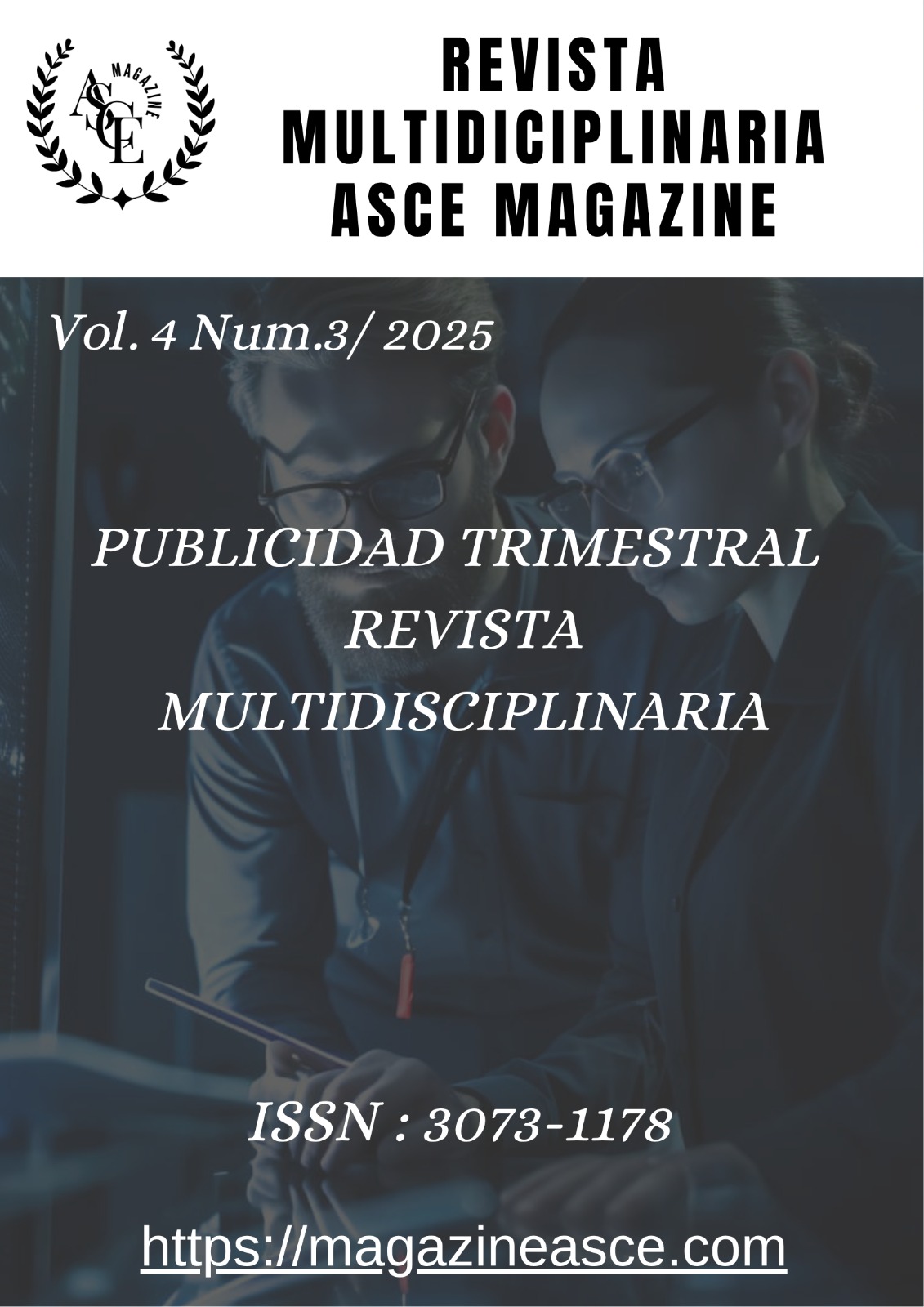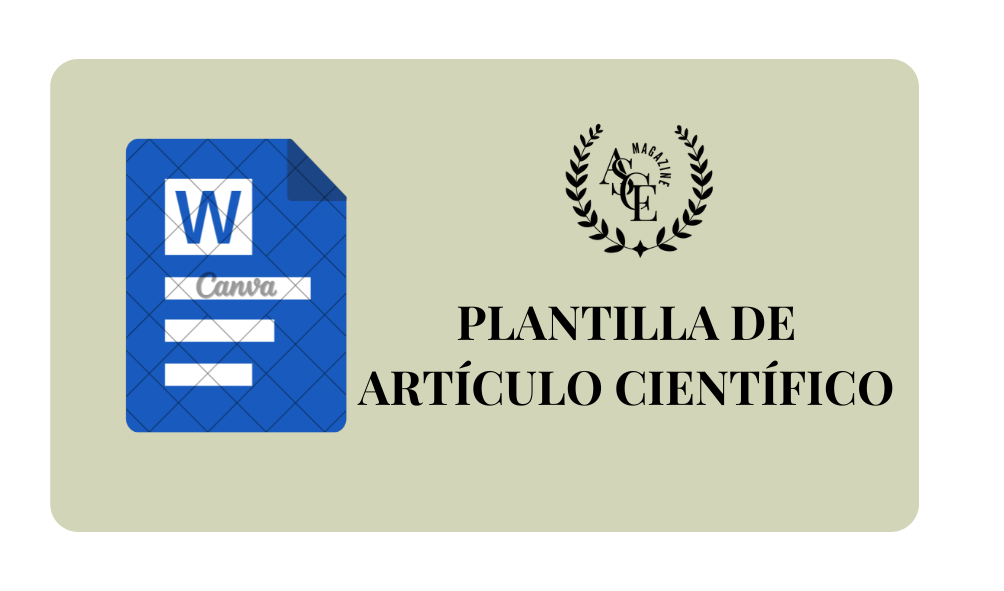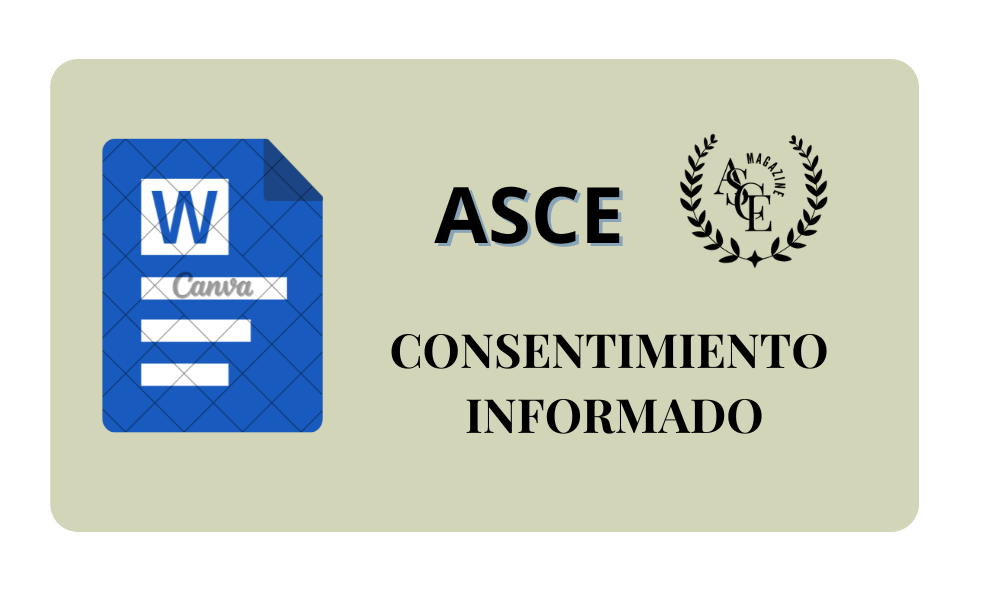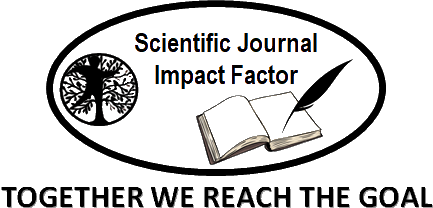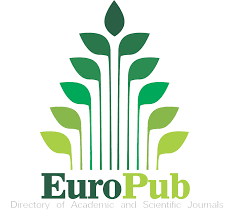Impacto de los factores sociodemográficos en la lactancia materna exclusiva en el Ecuador
DOI:
https://doi.org/10.70577/ASCE/1531.1549/2025Palabras clave:
Lactancia Materna Exclusiva; Factores Sociodemográficos, Factores De Riesgo, Lactante, EcuadorResumen
La Organización Mundial de la Salud (OMS) recomienda la lactancia materna exclusiva (LME) durante los primeros 6 meses de vida del lactante y la continuación de la lactancia materna (LM) durante los 2 años. La tasa mundial de LME es baja; por lo tanto, es importante identificar los factores que inciden en su cumplimiento. El objetivo de la presente investigación fue determinar los factores sociodemográficos que determinan la falta de adherencia o abandono de la LME en el Ecuador. Se realizó un estudio observacional de corte transversal analítico, para lo cual se utilizó la base de datos de acceso abierto de la segunda ronda de la Encuesta Nacional de Desnutrición Infantil (ENDI); se incluyeron los datos de un total de 12141 niños menores de 3 años. Las diferencias en las características sociodemográficas y de LM con la práctica de LME se verificaron mediante la prueba de chi-cuadrado. Se realizó un análisis de regresión logística para verificar los factores relacionados con la LME. La prevalencia general de cumplimiento de lactancia materna exclusiva durante al menos los primeros 6 meses de vida del niño fue del 36,11%. Existen factores sociodemográficos que se relacionan estrechamente con el apego o abandono de la LME en la población ecuatoriana. Por lo tanto, se requieren esfuerzos multifacéticos, eficaces y basados en la evidencia para aumentar el nivel nacional de lactancia materna exclusiva.
Descargas
Citas
Centers for Disease Control and Prevention. (2023). Breastfeeding Report Card United States, 2022. www.cdc.gov/breastfeedingAccessibleVersion:https://www.cdc.gov/breastfeeding/data/reportcard.htm
Chai, Y., Nandi, A., & Heymann, J. (2018). Does extending the duration of legislated paid maternity leave improve breastfeeding practices? Evidence from 38 low-income and middle-income countries. BMJ Global Health, 3(5). https://doi.org/10.1136/bmjgh-2018-001032 DOI: https://doi.org/10.1136/bmjgh-2018-001032
Dukuzumuremyi, J. P. C., Acheampong, K., Abesig, J., & Luo, J. (2020). Knowledge, attitude, and practice of exclusive breastfeeding among mothers in East Africa: A systematic review. International Breastfeeding Journal, 15(1), 1–7. https://doi.org/10.1186/s13006-020-00313-9 DOI: https://doi.org/10.1186/s13006-020-00313-9
Global Breastfeeding Collective, Unicef, & World Health Organization. (2023). Global breastfeeding scorecard 2023: rates of breastfeeding increase around the world through improved protection and support. https://www.unicef.org/documents/global-breastfeeding-scorecard-2023
Hossain, S., & Mihrshahi, S. (2022). Exclusive Breastfeeding and Childhood Morbidity: A Narrative Review. International Journal of Environmental Research and Public Health, 19(22), 2. https://doi.org/10.3390/ijerph192214804 DOI: https://doi.org/10.3390/ijerph192214804
Lio, R. M. S., Maugeri, A., Rosa, M. C. La, Cianci, A., Panella, M., Giunta, G., Agodi, A., & Barchitta, M. (2021). The impact of socio-demographic factors on breastfeeding: Findings from the “mamma & bambino” cohort. Medicina (Lithuania), 57(2), 1–12. https://doi.org/10.3390/medicina57020103 DOI: https://doi.org/10.3390/medicina57020103
Masi, A. C., & Stewart, C. J. (2024). Role of breastfeeding in disease prevention. Microbial Biotechnology, 17(7), 1–10. https://doi.org/10.1111/1751-7915.14520 DOI: https://doi.org/10.1111/1751-7915.14520
Ministerio de Salud Pública del Ecuador. (2015). Boletín Nacimientos por cesárea012-2015. https://www.google.com/url?sa=t&source=web&rct=j&opi=89978449&url=https://www.salud.gob.ec/wp-content/uploads/2017/01/BOLET%25C3%258DN-CESAREAS.pdf&ved=2ahUKEwiqiOXdqfeOAxUnQzABHRMsG8QQFnoECCcQAQ&usg=AOvVaw2TJApJU6HosfCGMqNMoa2D
Mohammed, S., Yakubu, I., Fuseini, A. G., Abdulai, A. M., & Yakubu, Y. H. (2023). Systematic review and meta-analysis of the prevalence and determinants of exclusive breastfeeding in the first six months of life in Ghana. BMC Public Health, 23(1), 1–18. https://doi.org/10.1186/s12889-023-15758-w DOI: https://doi.org/10.1186/s12889-023-15758-w
Shi, H., Yang, Y., Yin, X., Li, J., Fang, J., & Wang, X. (2021). Determinants of exclusive breastfeeding for the first six months in China: a cross-sectional study. International Breastfeeding Journal, 16(1), 1–12. https://doi.org/10.1186/s13006-021-00388-y DOI: https://doi.org/10.1186/s13006-021-00388-y
StataCorp. (2023). Stata Statistical Software (Release 18). StataCorp LLC. www.stata.com
Unicef, & World Health Organization. (2015). Advocacy Strategy: Breastfeeding Advocacy Initiative. https://iris.who.int/handle/10665/152891
Unicef, & World Health Organization. (2025). Global Nutrition Targets 2025 Breastfeeding Policy Brief. https://iris.who.int/bitstream/handle/10665/149022/WHO_NMH_NHD_14.7_eng.pdf?sequence=1&isAllowed=y
Victora, C. G., Bahl, R., Barros, A. J. D., França, G. V. A., Horton, S., Krasevec, J., Murch, S., Sankar, M. J., Walker, N., Rollins, N. C., Allen, K., Dharmage, S., Lodge, C., Peres, K. G., Bhandari, N., Chowdhury, R., Sinha, B., Taneja, S., Giugliani, E., … Richter, L. (2016). Breastfeeding in the 21st century: Epidemiology, mechanisms, and lifelong effect. The Lancet, 387(10017), 475–490. https://doi.org/10.1016/S0140-6736(15)01024-7 DOI: https://doi.org/10.1016/S0140-6736(15)01024-7
Wake, G. E., & Mittiku, Y. M. (2021). Prevalence of exclusive breastfeeding practice and its association with maternal employment in Ethiopia: a systematic review and meta-analysis. International Breastfeeding Journal, 16(1), 1–14. https://doi.org/10.1186/s13006-021-00432-x DOI: https://doi.org/10.1186/s13006-021-00432-x
Wanjohi, M., Griffiths, P., Wekesah, F., Muriuki, P., Muhia, N., Musoke, R. N., Fouts, H. N., Madise, N. J., & Kimani-Murage, E. W. (2017). Sociocultural factors influencing breastfeeding practices in two slums in Nairobi, Kenya. International Breastfeeding Journal, 12(1). https://doi.org/10.1186/s13006-016-0092-7 DOI: https://doi.org/10.1186/s13006-016-0092-7
Wu, Q., Tang, N., & Wacharasin, C. (2022). Factors influencing exclusive breastfeeding for 6 months postpartum: A systematic review. International Journal of Nursing Knowledge, 33(4), 290–303. https://doi.org/10.1111/2047-3095.12360 DOI: https://doi.org/10.1111/2047-3095.12360
Zong, X., Wu, H., Zhao, M., Magnussen, C. G., & Xi, B. (2021). Global prevalence of WHO infant feeding practices in 57 LMICs in 2010–2018 and time trends since 2000 for 44 LMICs. EClinicalMedicine, 37, 1. https://doi.org/10.1016/j.eclinm.2021.100971 DOI: https://doi.org/10.1016/j.eclinm.2021.100971
Descargas
Publicado
Cómo citar
Número
Sección
Licencia
Derechos de autor 2025 Jimmy Alexander Erazo Pomaquisa, Darío Fernando Martínez Cabadiana, Melanie Isabel Oleas Heredia, Geomara Dayana Bravo Lapo, Paola Monserrath Dávalos Balseca, Jessenia Esmeralda Villalba De La Vega

Esta obra está bajo una licencia internacional Creative Commons Atribución-NoComercial-SinDerivadas 4.0.
Eres libre de:
- Compartir : copiar y redistribuir el material en cualquier medio o formato
- Adaptar : remezclar, transformar y desarrollar el material
- El licenciante no puede revocar estas libertades siempre y cuando usted cumpla con los términos de la licencia.
En los siguientes términos:
- Atribución : Debe otorgar el crédito correspondiente , proporcionar un enlace a la licencia e indicar si se realizaron cambios . Puede hacerlo de cualquier manera razonable, pero no de ninguna manera que sugiera que el licenciante lo respalda a usted o a su uso.
- No comercial : no puede utilizar el material con fines comerciales .
- CompartirIgual — Si remezcla, transforma o construye sobre el material, debe distribuir sus contribuciones bajo la misma licencia que el original.
- Sin restricciones adicionales : no puede aplicar términos legales ni medidas tecnológicas que restrinjan legalmente a otros hacer algo que la licencia permite.

